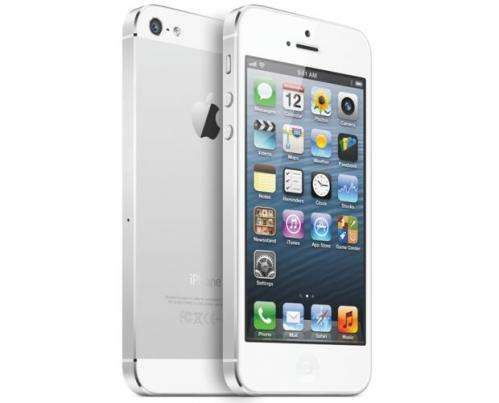The iPhone 5.
Asian mobile carriers look set to cash in on the iPhone 5 and its superfast speeds, but the model is not the game-changer that Apple needs if it is to remain top of the heap, analysts said Thursday.
The phone's use of Long-Term Evolution (LTE) wireless technology will allow carriers to increase their charges and boost profits as existing users download more content and smartphone non-converts are tempted to take the plunge.
But despite some new software, relatively minor tweaks to the hardware and an operating system that is starting to show its age risk leaving tech titan Apple trailing competitors such as South Korea's Samsung, and Google.
"The new iPhone will be Apple's most successful smartphone to date," said research firm Ovum from Melbourne.
"However, without a redesign of the iOS user experience and underlying software platform in the next two years, Apple will find itself in a position similar to Nokia and RIM... with outdated smartphone platforms."
Kim Hue-jae at Daishin Securities said the main interest in the new iPhone had focused on its adoption of the fourth-generation LTE network.
"The iPhone shows a significant enhancement only with the fact that it runs on LTE. It will help LTE operators to boost their subscribers," Kim said.
But in Japan, where Apple has 28.7 percent of the large and growing smartphone market, the iPhone is tied to the second and third largest carriers, KDDI and Softbank, neither of which yet runs a compatible 4G LTE network, according to Dow Jones Newswires.
Both companies say they intend to roll out an Apple-friendly LTE network sometime in the autumn, but neither has specified a date. The iPhone 5 hits stores in Japan on September 21, the same day it goes on sale in the United States, Canada, Britain, France, Germany, Singapore, Hong Kong and Australia.
Industry leader NTT DoCoMo, which has a stranglehold on about half of the Japanese mobile phone market, does offer a compatible network, but does not sell Apple products.
It is heavily pushing the phones running Google's Android operating system, such as Samsung's Galaxy S III, which has become the smartphone market leader in a number of countries in Asia and the West.
Apple and Samsung have been involved in patent rows around the world and last month the US giant won more than $1 billion in a high-profile court case against its bitter rival.
This week the Wall Street Journal reported that Apple was shifting some orders for memory chips for the iPhone from Samsung Electronics to other regional manufacturers but banking giant HSBC said Samsung was unlikely to be badly hurt.
"We believe the iPhone 5 launch will have limited impact to Samsung component businesses and is potentially positive to earnings," it said, adding that Apple's supply chain "diversifications" had been expected.
Smartphones accounted for only 22.5 percent of the Japanese mobile phone market as of March, with the ratio expected to rise in coming years, according to MM Research Institute.
"Just from the promotion point of view, it's easier to sell new products with new functions than existing products," said Daiwa Securities analyst Koki Shiraishi said.
"The launch should make more people aware of the availability of smartphones and reach people who are yet to use them," he said.
But that in itself could cause problems.
The expected spike in demand might lead to production hiccups, said Michito Kimura, senior market analyst at IDC Japan.
"It is possible that supply shortage of major parts, such as semiconductors, may temporarily suppress high-end handsets," including iPhone 5, he said.
Some of Apple's suppliers got a boost from Wednesday's unveiling, with Meiko Electronics, a manufacturer of printed circuit boards, soaring over 10.73 percent on the Tokyo Stock Exchange. Murata Manufacturing was up 2.85 percent and TDK rose 3.70 percent.
But, said Kang Hyun-gie, an analyst at Solomon Investment & Securities in South Korea, market players were not that impressed.
"Overall, the iPhone 5 was disappointing hardware-wise. The software side seemed a bit promising, but it seems like it isn't good enough to excite investors," he said.
(c) 2012 AFP





















